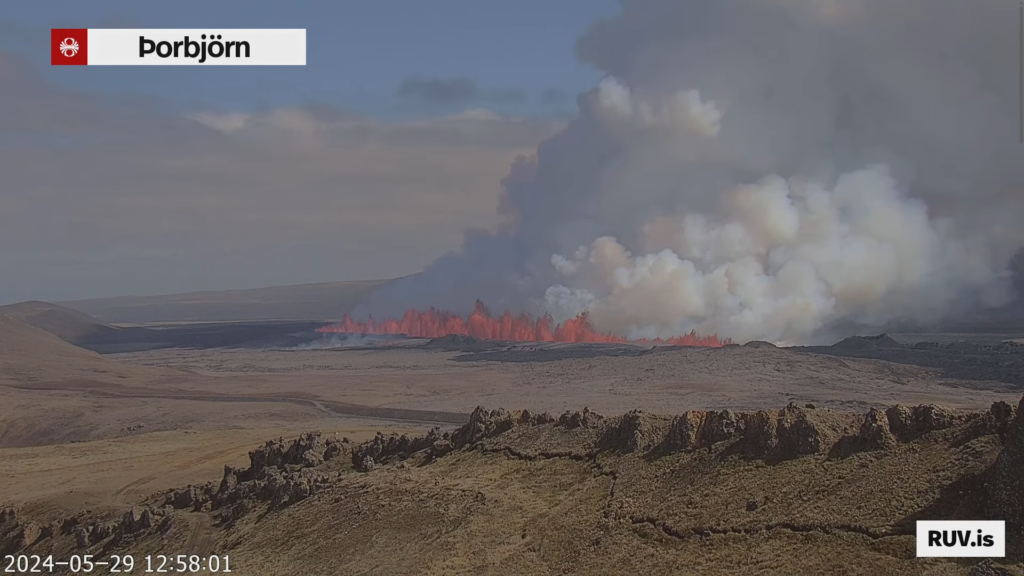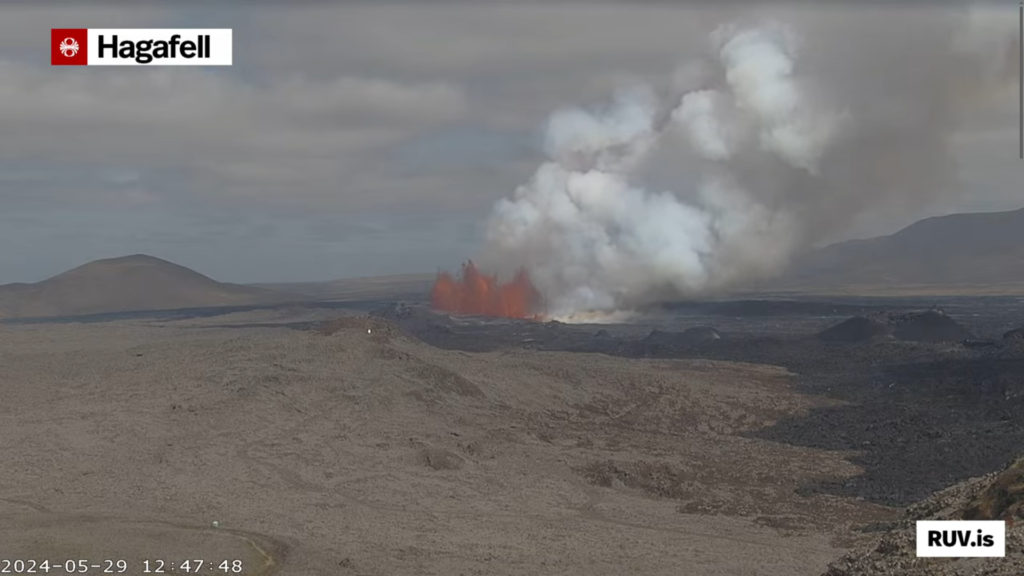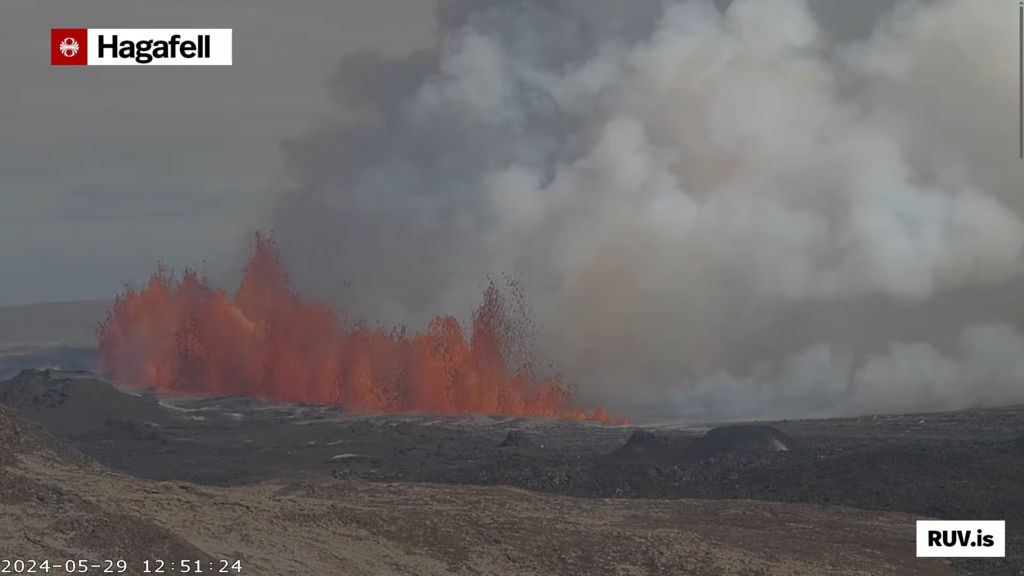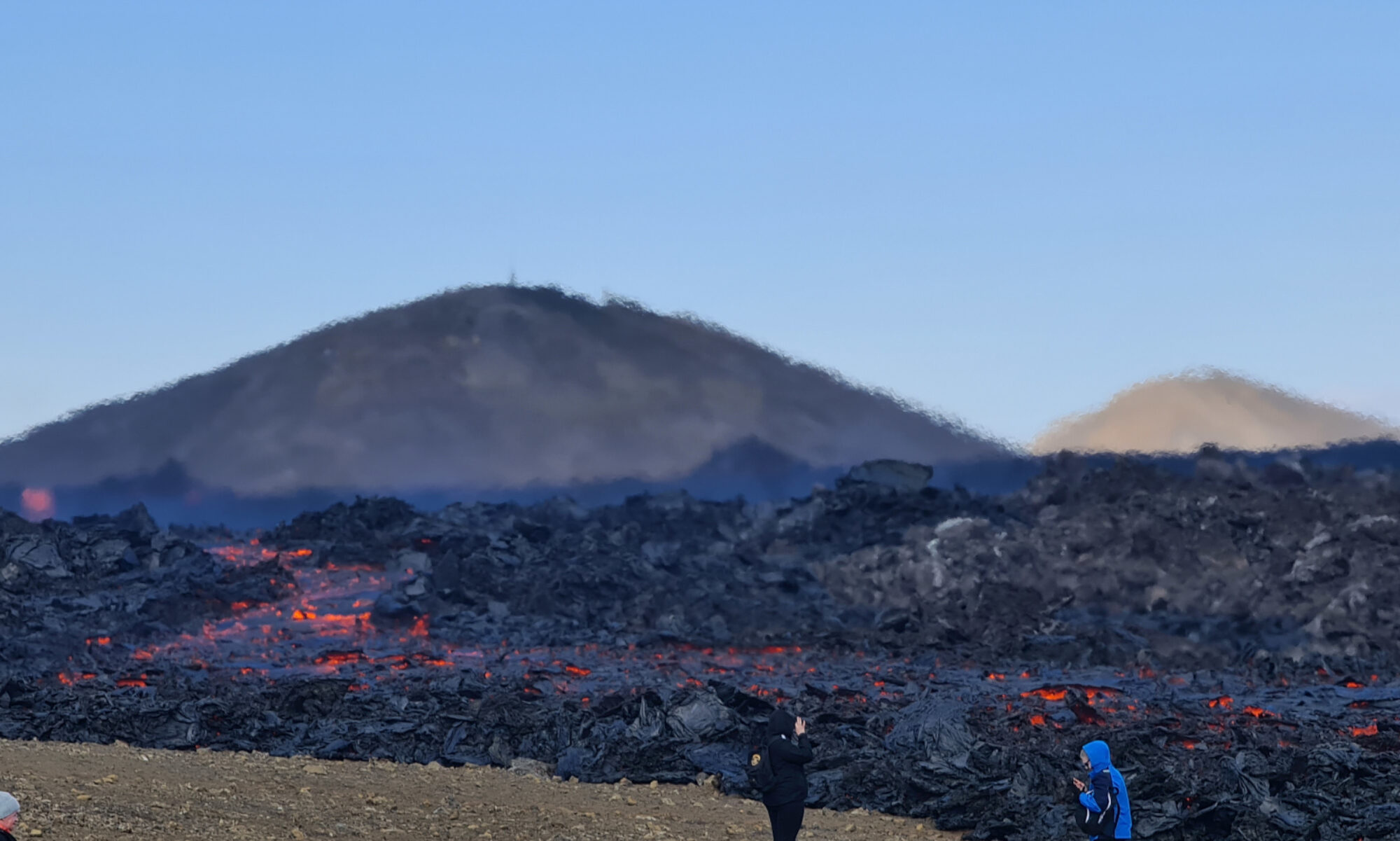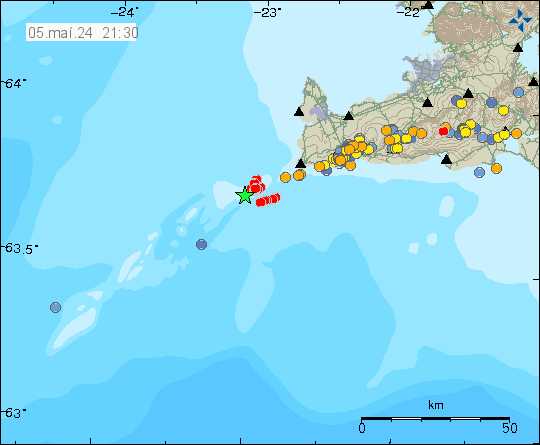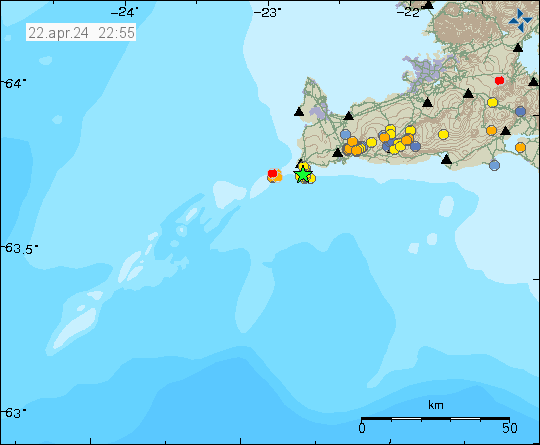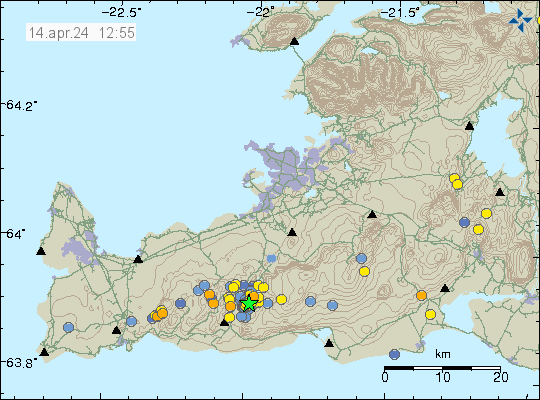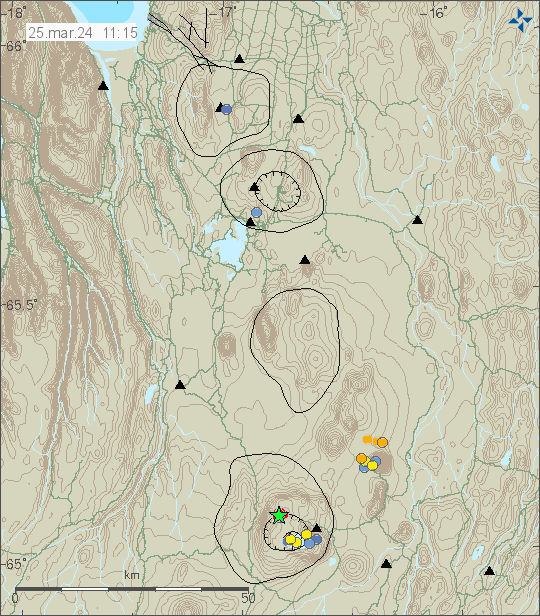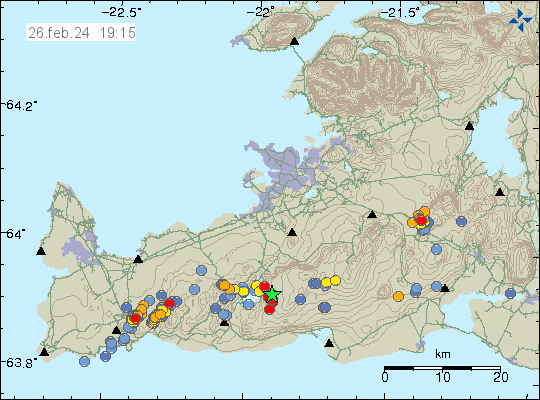This is a short update on the eruption in Sundhnúkagígar on 30. May 2024 at 00:49 UTC. This might be the only update on this eruption, since normally, eruptions in Sundhnúkagígar only last one to three days normally. If that happens now remains to be seen.
Yesterday (29. May 2024) at 12:46 UTC an eruption started in Sundhnúkagígar, close to a small mountain called Sýlingafell and other nearby mountains. This is also the same area that has had eruptions in recent months. This eruption was large and peaked at 2000m3/sec. Since then it has slowed down and is maybe only around 200m3/sec to 600m3/sec for now. The flow from the eruption is going to change without warning and quickly. The eruption fissure today was at the longest around 4 km long. Currently, at the writing of this article, the eruption fissure is around 1 to 2,5 km long. How long the fissure is going to change without warning.
